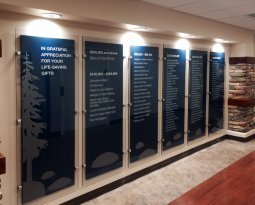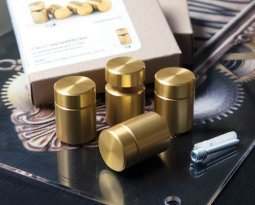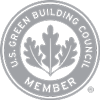How to Win at Trade Shows, Part 1
In this article the author will discuss how to select trade shows to attend, how to design an audience appropriate booth, and how to measure ROI on the trade show.
 Selecting Shows:
Selecting Shows:
Trade shows can be an overwhelming challenge for anyone that has never coordinated one before. Most trade shows offer vague attendee information as well, driving prospective exhibitors to research shows and seek word-of-mouth endorsements from past exhibitors. Performing due diligence with new shows is a great start but there are more things to consider before choosing trade shows.
Before any discovery actions are launched to select shows, an exhibitor should really sit down and decide who the company should be reaching with this expensive marketing activity, what shows these buyers are likely to attend, and what the goals for specific show should be. The best place to start is at the beginning. It is recommended to start by defining the 4 P’s of your marketing plan. The 4 Ps are :
Product:
 Clearly define your product and what sub categories in the marketplace your product falls under. Who are you designing the product for? Would these people use this product? Where are your products most likely to be sold or showcased in a marketplace? What benefits or values will your product add to the inventory or services of prospective buyers?
Clearly define your product and what sub categories in the marketplace your product falls under. Who are you designing the product for? Would these people use this product? Where are your products most likely to be sold or showcased in a marketplace? What benefits or values will your product add to the inventory or services of prospective buyers?
You don’t always have to show everything your company makes. Show the heroes of each line and have supporting brochures or catalogs to aid the conversation when discussing other products. Attendees can be overwhelmed with busy displays and may miss the one thing they are looking for. Giving them a clear understanding of what products and categories your company sells will help the attendee become acclimated quickly to your booth and foster interactive discussions with exhibitors.
Price:
Just like factors we discussed in the Product section, price can dictate who your customers will be and where in a marketplace your products will be displayed and sold. For example, if you make wristwatches, are your watches a luxury item or more of a fashion accessory? Just like in a retail store, depending on the product category, your products may be display in a different area of a store or a trade show. Review your price structures and make sure that these match the target customer that your company is designing for.
Often salespeople who represent a high priced brand will be self-conscious about their product pricing. This is the wrong attitude entirely. Your products and services are priced because of the value they hold. Do you offer the best service? Of course you do. Are customers better off using your products and services? Are they better then your competitors? YES! Be proud of your brand and discuss with customers the value the brand holds, especial the information that would resonate with the customer. No price tags required!
Place:
 You might think that the “place” is the exhibit hall but no, it’s your distribution. Where and who are you selling your product to? Out of all these sales channels, which ones would you like to increase? Which ones are doing well but have customers only buying from one product category?
You might think that the “place” is the exhibit hall but no, it’s your distribution. Where and who are you selling your product to? Out of all these sales channels, which ones would you like to increase? Which ones are doing well but have customers only buying from one product category?
Defining these will help you create goals for your show. For example, at one show your goal may be to get woodworkers that are already buying electric chop saws to think of your brand when they need new mallets as well. What media outlets and buyers would add legitimacy to your mallets? Is a low priced leader the best retail partner or is an endorsement from a respected organization and only distribution more valuable? Try building a buzz around your new product in the marketplace before you attend a trade show.
Promotion Part 1:
Finally we get to the show right? Nope, not yet. We need to make goals. Part of your marketing plan is setting realistic goals based on the questions that we answered with the other “Ps”. Goals for a trade show should include recuperating your expenditure for the show in sales but there are other things to consider. ROI is a great goal but shouldn’t be the only one an exhibitor has. Each trade show should have specific goals. How many new accounts should be captured from a trade show? How many of those new accounts should be from a specific industry? If a company sells at shows, is there a specific product the exhibitor would like to sell? Make hard but attainable goals in addition to any ROI goal.
Promotion Part 2 Lead Retrieval:
 The easiest way to measure ROI after a trade show is to purchase what is called lead retrieval software at the show. This allows you to scan the attendee badges at shows and leave with the contact information of all the people that you met. Most of these programs also allow the exhibitor to put notes in each file as well. Track your sales over the next three months and compare the sales received from new customers brought in from the show and existing customers you spoke with at the show to what you had spent exhibiting at the show. Use your best judgment to decide of the purchases made by the existing customers were a result of the trade show. Subtract your sales from your expenditure to exhibit and then divide that number by the expenditure. This will give you a nice percentage for the Return on Marketing Investment (ROMI).
The easiest way to measure ROI after a trade show is to purchase what is called lead retrieval software at the show. This allows you to scan the attendee badges at shows and leave with the contact information of all the people that you met. Most of these programs also allow the exhibitor to put notes in each file as well. Track your sales over the next three months and compare the sales received from new customers brought in from the show and existing customers you spoke with at the show to what you had spent exhibiting at the show. Use your best judgment to decide of the purchases made by the existing customers were a result of the trade show. Subtract your sales from your expenditure to exhibit and then divide that number by the expenditure. This will give you a nice percentage for the Return on Marketing Investment (ROMI).
If a company spent $10,000 on exhibiting and received $15,000 in orders post trade show, the company ends up with a positive 50% ROMI. This means the company made back 150% of the money spent but the profit or return really was only 50% after covering the expense of attending the show. We aren’t in business to break even right?
Promotion Part 3 Exhibits:
Now the exhibitor knows what industries to target, has chosen what products to exhibit and what the goals are for each show. Design exhibits around hero products that represent the entire line each product belongs to. Make the exhibits unique and inspiring. Exhibits don’t need to be realistic, they need to inspire. Draw attendees to you booth with amazing exhibits and learn about what they do, what their challenges are and why the attendees came to the show. During the conversation with the attendee, if there is a product not represented the exhibitor can fall back on brochures and catalogs to point out products and services not present in exhibits.
Services
 In the next installment, ordering services and coordinating exhibit shipments will be discussed. The reader will learn what services are most likely to be needed and some tips and tricks that will save your company money.
In the next installment, ordering services and coordinating exhibit shipments will be discussed. The reader will learn what services are most likely to be needed and some tips and tricks that will save your company money.
Read Part 2 here: https://www.standoffsystems.com/article/win-trade-shows-part-2/








